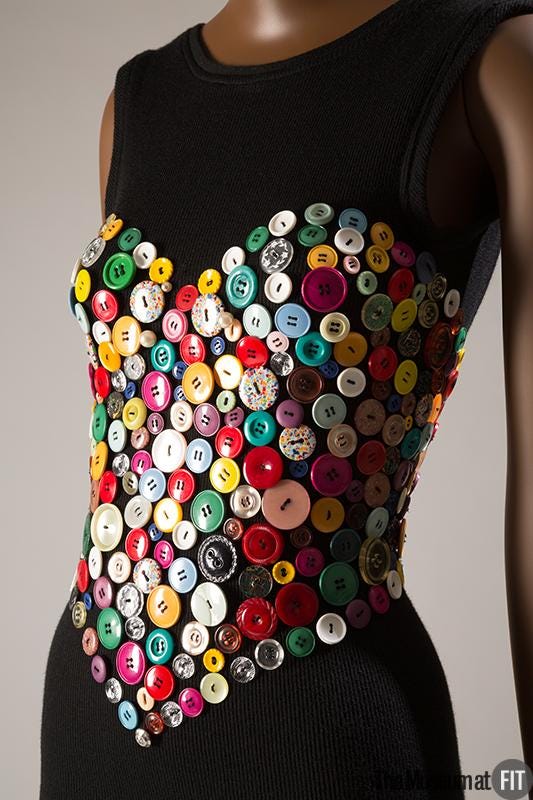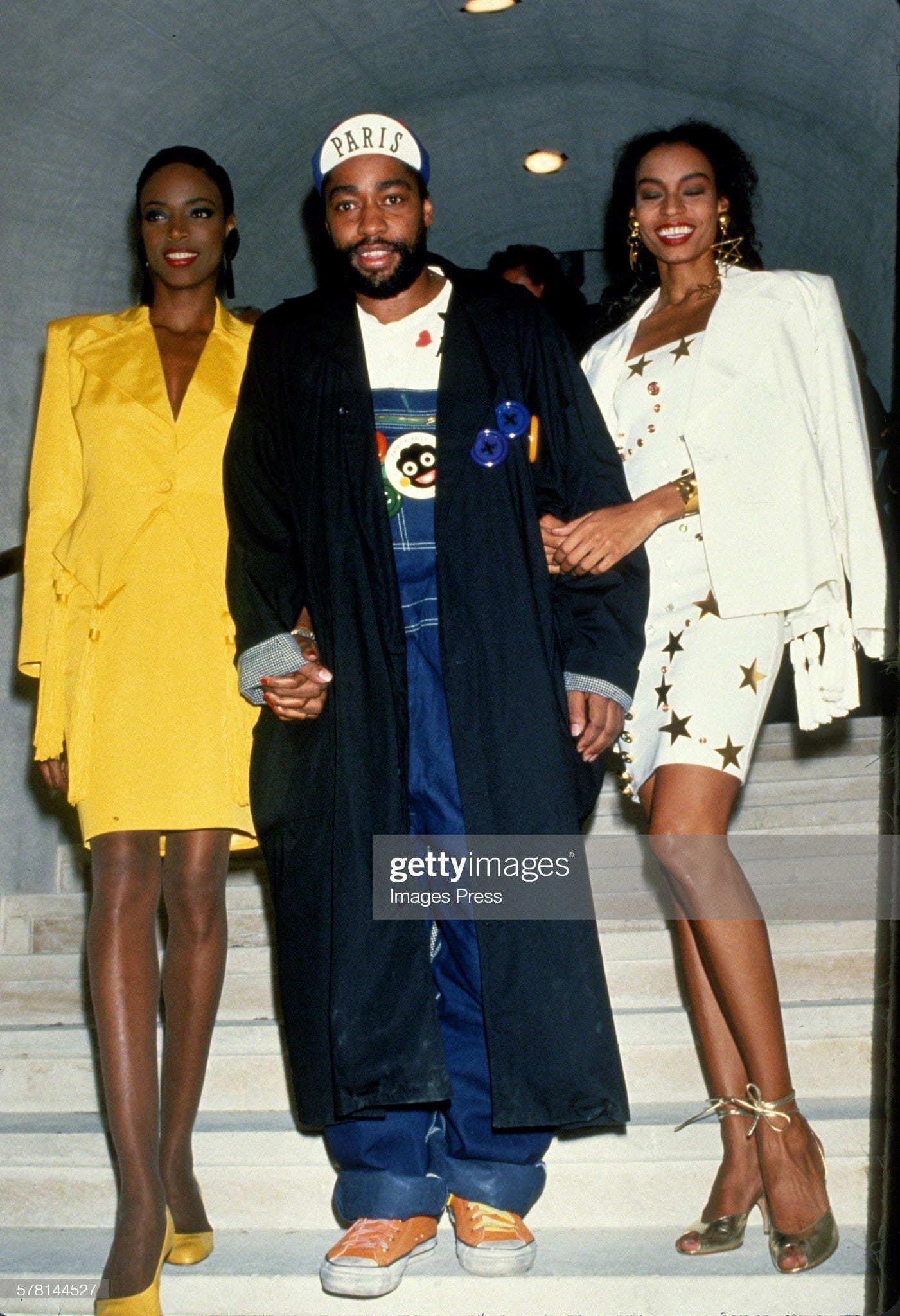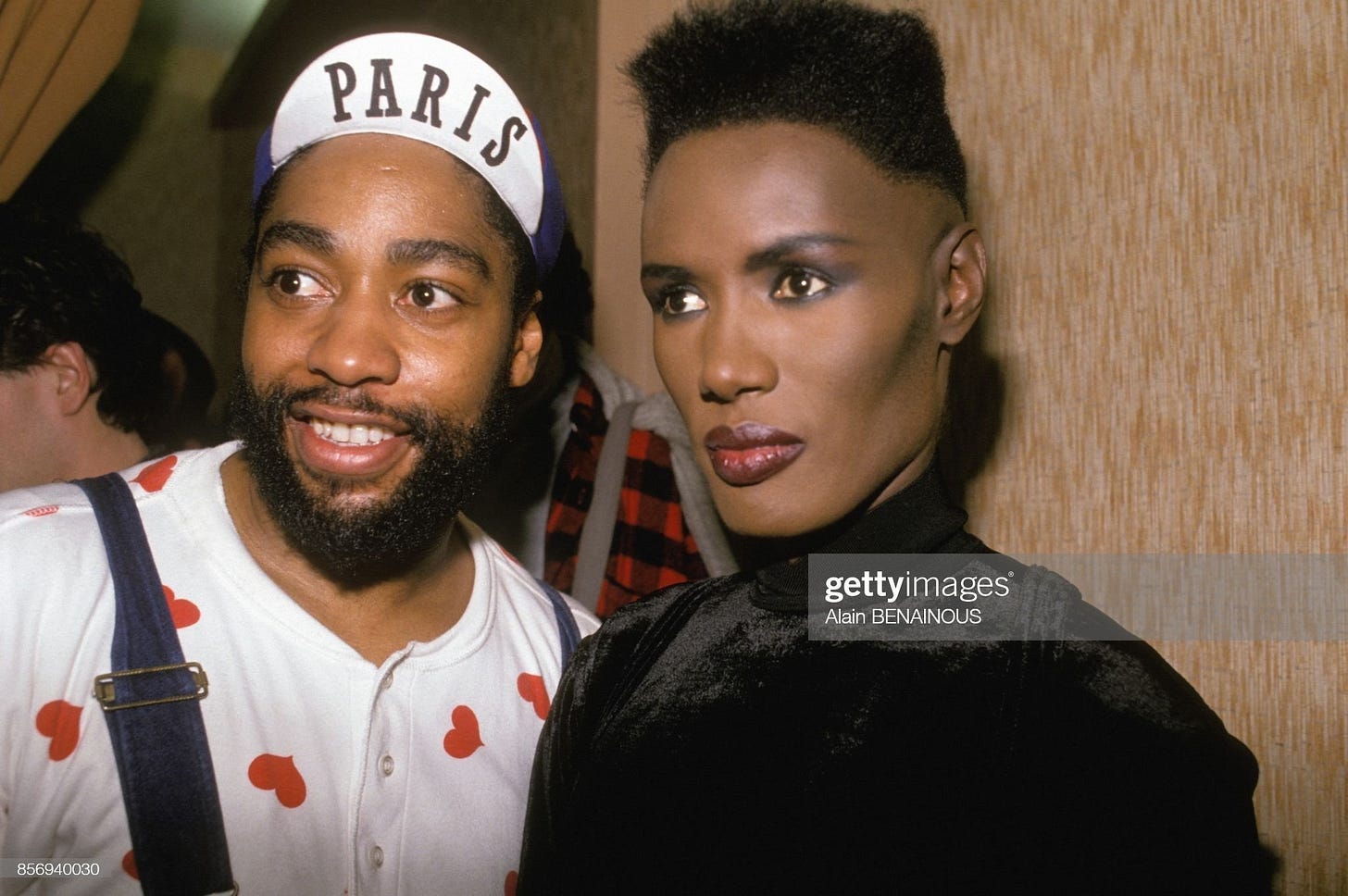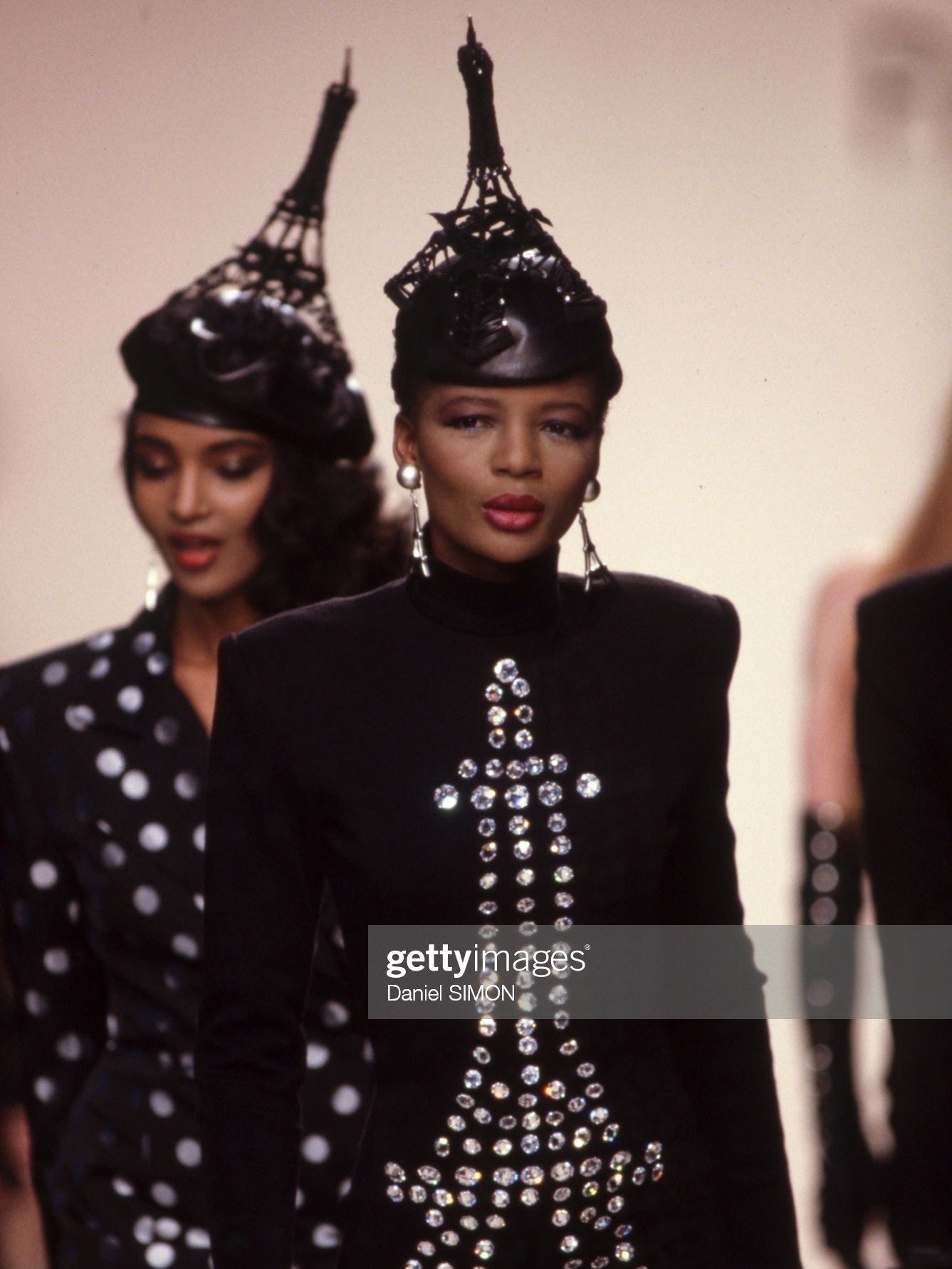This article was contributed by a member of our beloved Sustainable Baddie community. Sustainable Baddie exists in part to share perspectives outside of our own and to present a rich array of diverse voices. The opinions presented are those of the guest contributor and do not necessarily reflect or represent Sustainable Baddie’s voice, tone, and point of view.
A gay Black kid turned high-fashion designer from the Jim Crow South, specifically rural Mississippi, Patrick Kelly accomplished more than many fashion designers dream of in his short lifetime. Before he ever started designing, he had a knack for mending clothes already in his wardrobe and he enjoyed selling vintage pieces. I wish this story had a fairytale ending, because while watching old shows of Patrick’s, it’s so easy to feel energized. However, his life ended tragically; indeed, a generation of artists were lost to AIDS, and sadly, Patrick was one of them. Nonetheless, he left us a profound legacy, and in honor of Black History Month, do your part to remember his name, baddies!
In 1970s Atlanta, Patrick could be found knee-deep in vintage goods while working at an AMVETS thrift shop. It was there that he started upcycling some of the donated clothing, giving discarded pieces a new life. He also started designing and making his own garments. Though the 1970s were tumultuous years, he maintained a low profile and followed the example set by the strong women in his family, who “were…aware of how to use hand-me-downs and fabric remnants to create ‘Sunday best’ outfits for themselves, family, friends.” (Patrick Kelly: Runway of Love, P. 176)
Some remember Patrick for his whimsical designs influenced by Yves Saint Laurent. Others remember Patrick’s iconic signature buttons which varied in size and color - all now are extremely valuable. Today, Patrick’s vintage button sets sell for nearly $1000 on the 1st Dibs Auction site, with some signature button dresses listed for over $4000. Patrick featured mismatched buttons as an ode to the button jars his grandmother had in the house and used in garments growing up. Repair was both valued and essential in the days before the commercialization of fashion. I can only hope the re-emerging trend of mending is here to stay.
Initially, you wouldn’t know that Patrick dropped out of college, simply because he also was a true fashion nerd who would study Vogue and any fashion-related text he could get his hands on. His avid studying and his innate creativity resulted in his wonderfully colorful and bold designs. He eventually did return to school to formally study at Parsons. He was known as a great stylist on campus and adorned his classmates with glamorous attire for nights out at the famed NYC dance club, Paradise Garage.
When America proved unkind to him, Patrick moved to Europe with the help and funding from his friend and model Pat Cleveland, and his career took off! He ended up working for some of the great founding fashion designers and showed his own designs in the fashion capital of the world, Paris.
Initially, he designed for the late Spanish fashion designer Paco Rabanne in 1981 and rented an apartment from him in Paris during the early 1980s. Paco Rabanne was ahead of his time and he actually championed Black designers, setting up Center 57, an exhibition space for Black and Caribbean diaspora artists. Paco Rabanne was also one of the first designers to feature black models on the runway.
As a designer, Patrick had a distinct artistic voice shaped by the social conditions defined by his identity as a gay Black man. He reappropriated racist caricatures such as blackface and turned them on their heads, shedding light on the tools of racial stereotyping and transforming them into political art. His upbringing in the segregated South thus made him an activist of sorts, using his art as a medium to contest divisive norms and highlight a path to a more inclusive future. Who is a true artist if they don’t make an impassioned statement?
His runways were always colorfully diverse, featuring models of all races in the brightest creations, with a particular spotlight on Black women. This may be because Patrick learned most of his skills from the dynamic women in his family; his mother taught him drawing and his sister taught him sewing skills. During the 1970s and 1980s, many people still sewed their own clothes, so “in 1988, Vogue Patterns launched the first of five licensed sewing patterns for Patrick Kelly.” Our sewing baddies might be interested in finding some old patterns of his — I’d recommend looking on eBay and Etsy.
While Patrick isn’t a household name, I think he should be. Keep your eyes peeled for the Patrick Kelly label while thrifting. In the meantime, I suggest Moore Vintage Archive to shop Patrick Kelly's vintage works.
Sources + Further Reading
Patrick Kelly: Runway of Love by Laura L. Camerlengo and Dilys E. Blum, with contributions by Sequoia Barnes, Darnell-Jamal Lisby, Eric Darnell Pritchard, André Leon Talley and madison moore.
About the Guest Contributor
Rose Mae Turner (she/her) is a sustainable fashion designer, textile artist, and slow fashion advocate with expertise in archival fashion. She is based in Brooklyn, NY. You can find her on Instagram @rosiemae27, and her design work at https://rosinamae.com.










